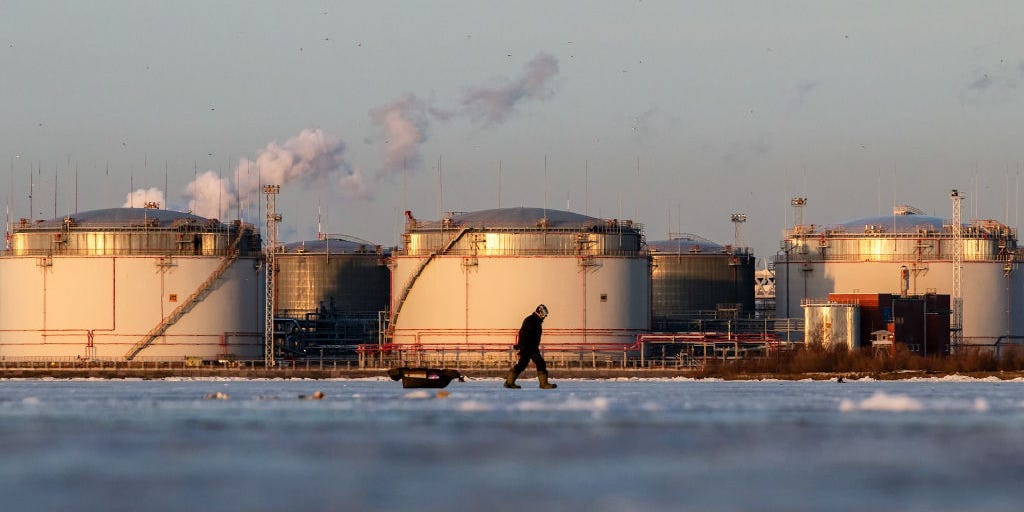- Russia's benchmark crude is fetching roughly $75 a barrel, well above the G-7's $60 price cap, Bloomberg reported.
- Urals crude reaching India trades at $88 a barrel, while oil leaving from eastern Russia sells for $84 a barrel.
- However, sanctions have still hit Russia, jacking up costs to ship oil around the world.
The price of Russian oil is blowing past the $60 a barrel cap set by G-7 countries, highlighting the difficulty the West has had in curtailing energy revenues that have been used to fund Russia's war against Ukraine.
Citing data from Argus Media, Bloomberg reported on Wednesday that Moscow's benchmark Urals crude is fetching roughly $75 a barrel as it leaves Baltic Sea and Black Sea ports.
The sharp price increase and sustained levels above $60 for Urals crude throughout the year cast doubt on the West's attestation process, which is meant to document and ensure that cargo costs remain at $60 per barrel or below.
A senior US Treasury official told Bloomberg that the price increase is probably due to broader geopolitical dynamics, and the cap is still effective in reducing Kremlin revenue from oil sales, pushing the commodity to be sold under the cap via Western services or through Russia's shadow fleet, which the US is eyeing for sanctions.
Urals crude reaching India trades at $88 a barrel, while oil leaving from eastern Russia sells for $84 a barrel, trading well clear of the price cap for about a year.
However, according to Argus, sanctions have still affected Russia, with significant freight costs directly linked to sanctions. The falling export prices made deliveries to Asia considerably more expensive compared to deliveries to Europe, and sanctions have added as much as $8.79 per barrel to delivery costs for Urals cargoes to India or China.
Since October, the US Treasury has been preparing to penalize breaches of the price cap. However, Bloomberg said given concerns about disrupting crude flow and increasing prices, the recent surge in Brent futures to around $90 a barrel may delay action.
